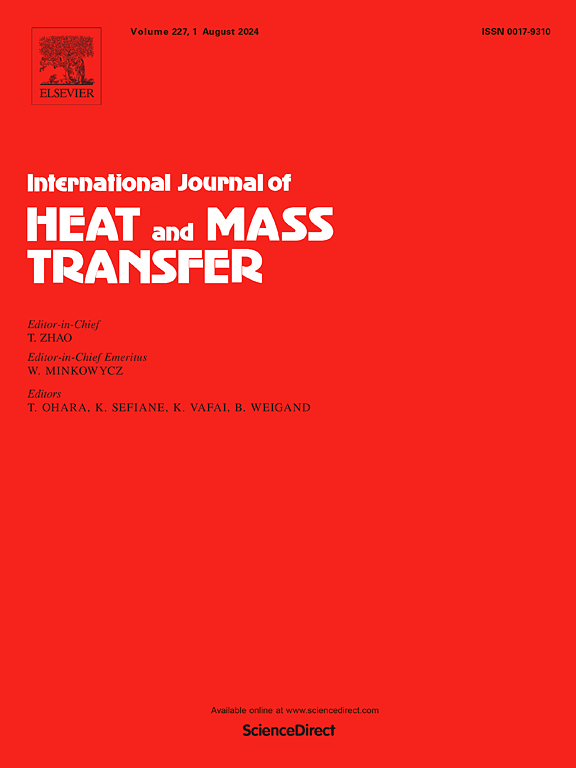Modeling electron beam melting through electron trajectory control in electromagnetic fields for homogeneous titanium ingot manufacturing
IF 5
2区 工程技术
Q1 ENGINEERING, MECHANICAL
International Journal of Heat and Mass Transfer
Pub Date : 2025-02-10
DOI:10.1016/j.ijheatmasstransfer.2025.126799
引用次数: 0
Abstract
Electron beam melting (EBM), which is used to prepare ultra-high-purity refractory and rare metals with high melting points, is associated with an extremely high energy density of tens of megawatts per unit area. The shape and momentum of the electron beam can be adjusted by controlling the electromagnetic field within the electron-beam device to generate this high energy density. However, the energy density in EBM may decrease depending on the beam geometry and magnetic field strength of the focusing coil. To achieve high energy efficiency, the flux density generated by the focusing coil of the electron beam gun should be controlled such that the focusing point of the electron beam is on the surface of the molten material. In this study, the electron beam trajectory in the EBM process was altered by controlling the momentum of the electrons generated by the electric field and the shape of the electron beam produced under the magnetic field generated by the solenoid coil. Finite element analysis was performed to establish the process conditions required to form a beam with high energy efficiency and to minimize the electron bundle loss due to collisions with the inner wall. Our findings can be applied to the refinement of rare metals through high-efficiency energy-beam generation using electron-beam devices with various specifications. The necessary conditions for the electron beam to attain a Gaussian distribution are also outlined. To validate the simulation results, a real-time monitoring of a metal surface subjected to electron-beam irradiation was conducted using a thermal imaging camera. The predicted melting characteristics of titanium, based on electron beam trajectory and turbulence heat transfer models, were validated by ingot manufacturing experiments, confirming the model's applicability.

求助全文
约1分钟内获得全文
求助全文
来源期刊
CiteScore
10.30
自引率
13.50%
发文量
1319
审稿时长
41 days
期刊介绍:
International Journal of Heat and Mass Transfer is the vehicle for the exchange of basic ideas in heat and mass transfer between research workers and engineers throughout the world. It focuses on both analytical and experimental research, with an emphasis on contributions which increase the basic understanding of transfer processes and their application to engineering problems.
Topics include:
-New methods of measuring and/or correlating transport-property data
-Energy engineering
-Environmental applications of heat and/or mass transfer

 求助内容:
求助内容: 应助结果提醒方式:
应助结果提醒方式:


